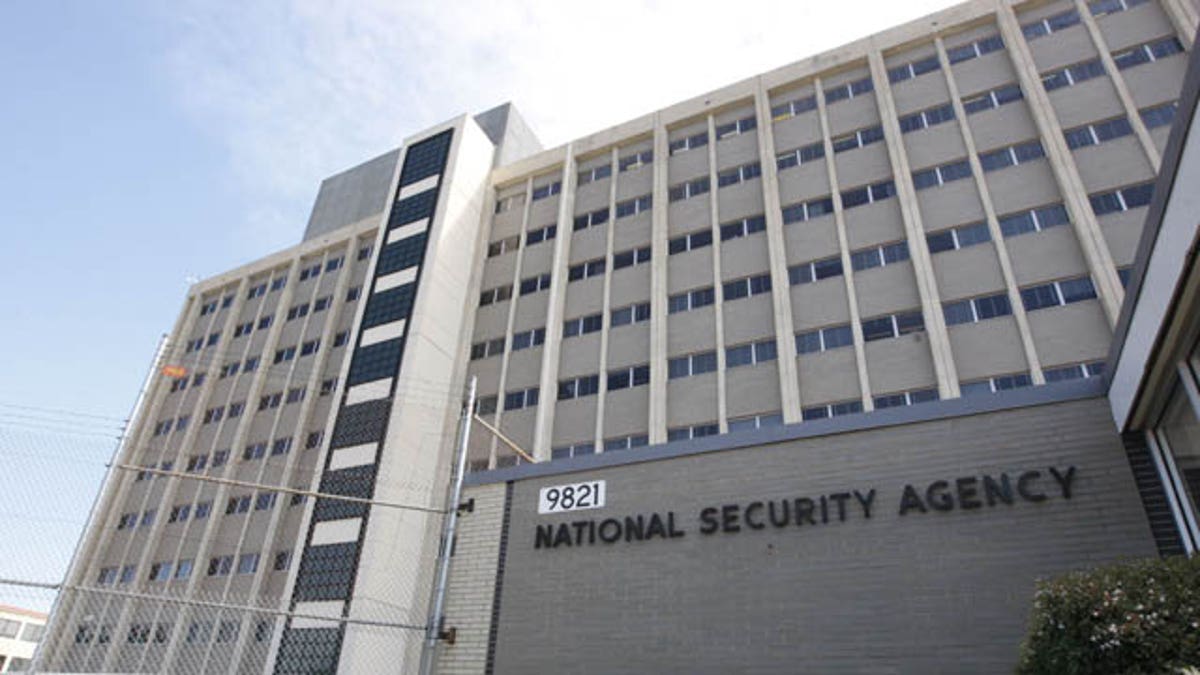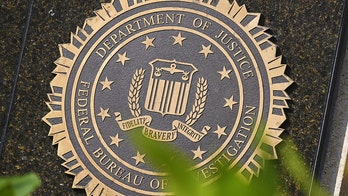
FILE - This Sept. 19, 2007 file photo shows the National Security Agency building at Fort Meade, Md. (AP Photo)
The National Security Agency has collaborated closely with the CIA in the program of drone strikes against suspected terrorists overseas that is at the heart of President Obama's strategy against Islamic militants, according to to a report based on documents leaked by former NSA contractor Edward Snowden.
The Washington Post reported Wednesday night that in one instance, an email sent by the wife of an Usama bin Laden associate, Hassan Ghul, contained clues to her husband's whereabouts and led to a CIA drone strike that killed him in Pakistan in October 2012.
While citing documents provided by Snowden -- the American is hiding out in Russia after being granted asylum there -- the Post reported that it was withholding many details about the drone-strike missions at the request of U.S. intelligence officials. They cited potential damage to ongoing operations and national security for their request, the paper reported.
The documents make clear that the CIA-operated drone campaign relies heavily on the NSA's ability to vacuum up enormous quantities of e-mail, phone calls and other fragments of signals intelligence, or SIGINT, the newspaper said.
The NSA created a secret unit known as the Counter-Terrorism Mission Aligned Cell, or CT MAC, to concentrate the agency's vast resources on hard-to-find terrorism targets, the Post reported.
In another example of the co-operation between the two agencies, the paper reports that the NSA assigned senior analysts to the CIA’s Counterterrorism Center, and deployed others to work alongside CIA counterparts at almost every major U.S. embassy or military base overseas.
The documents provided by Snowden don't explain how the bin Laden associate's email was obtained or whether it was obtained through the controversial NSA programs recently made public, including its metadata collection of numbers dialed by nearly every person in the United States.
Instead, the Post said its review of the documents indicates that the agency depends heavily on highly targeted network penetrations to gather information that wouldn't otherwise be trapped in surveillance nets that the NSA has set at key Internet gateways.
The U.S. has never publicly acknowledged killing Ghul, according to the Post. The Al Qaeda operative had been captured in Iraq in 2004 and helped expose bin Laden's courier network, a key development in the effort to locate bin Laden. Ghul then spent two years in a secret CIA prison and returned to Al Qaeda after the U.S. sent him to his native Pakistan in 2006.
U.S. forces killed bin Laden at his Pakistan hideout in 2011. That same year, the Treasury Department named Ghul a target of U.S. counterterrorism sanctions after he had helped al-Qaeda re-establish logistics networks, enabling Al Qaeda to move people and money in and out of the country. The Post said an NSA document described Ghul as Al Qaeda chief of military operations and detailed a broad surveillance effort to find him.
Obtained during a months-long effort to find Ghul, the email from his wife erased doubts U.S. forces had found him, the Post said.
Click for the story from the Washington Post
The Associated Press contributed to this report




